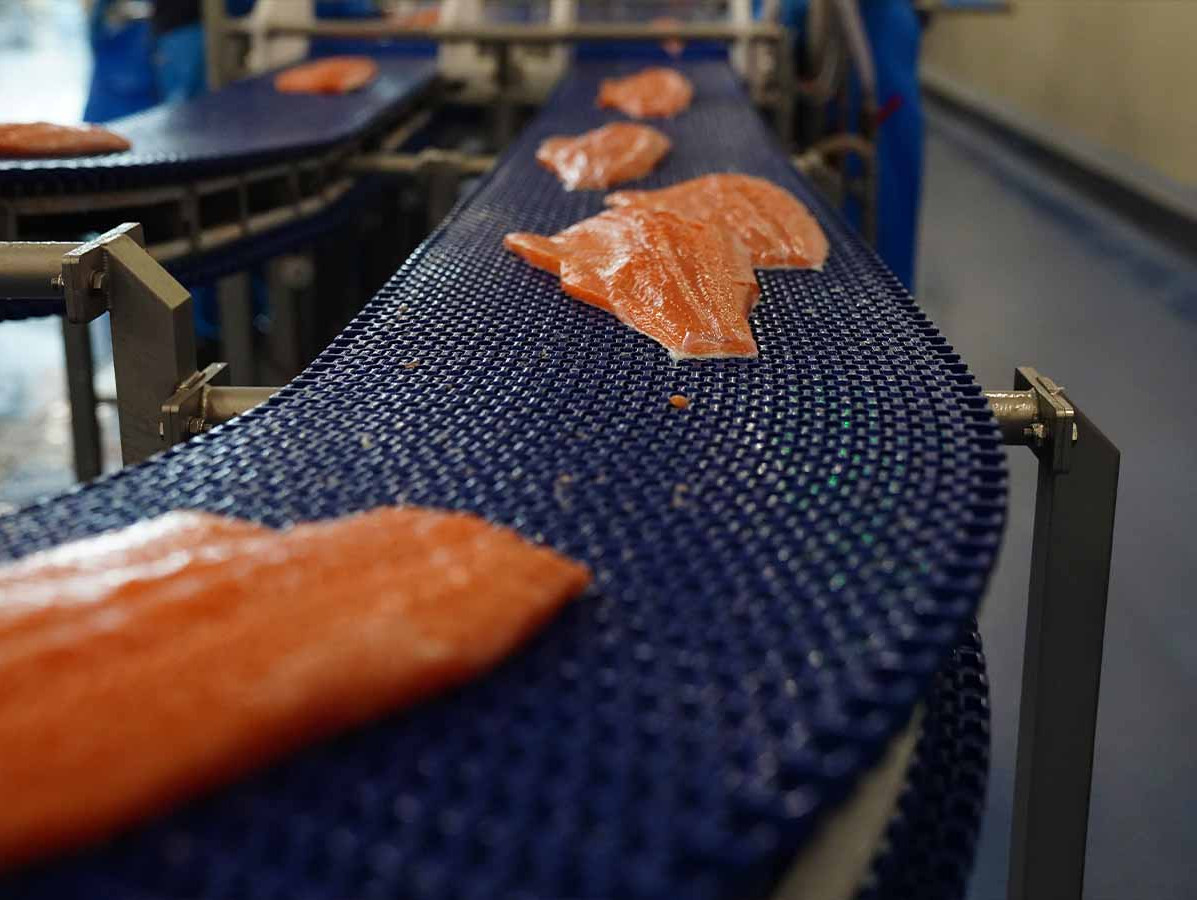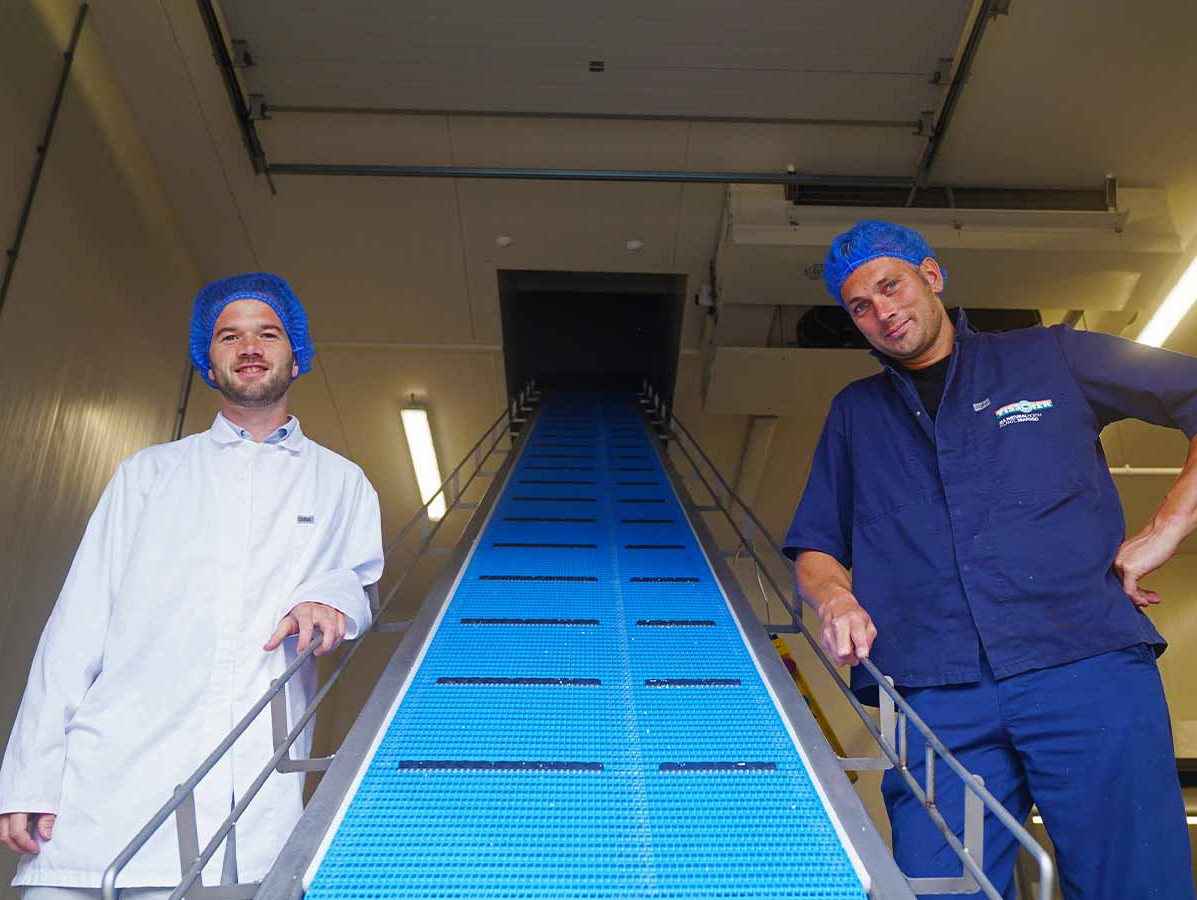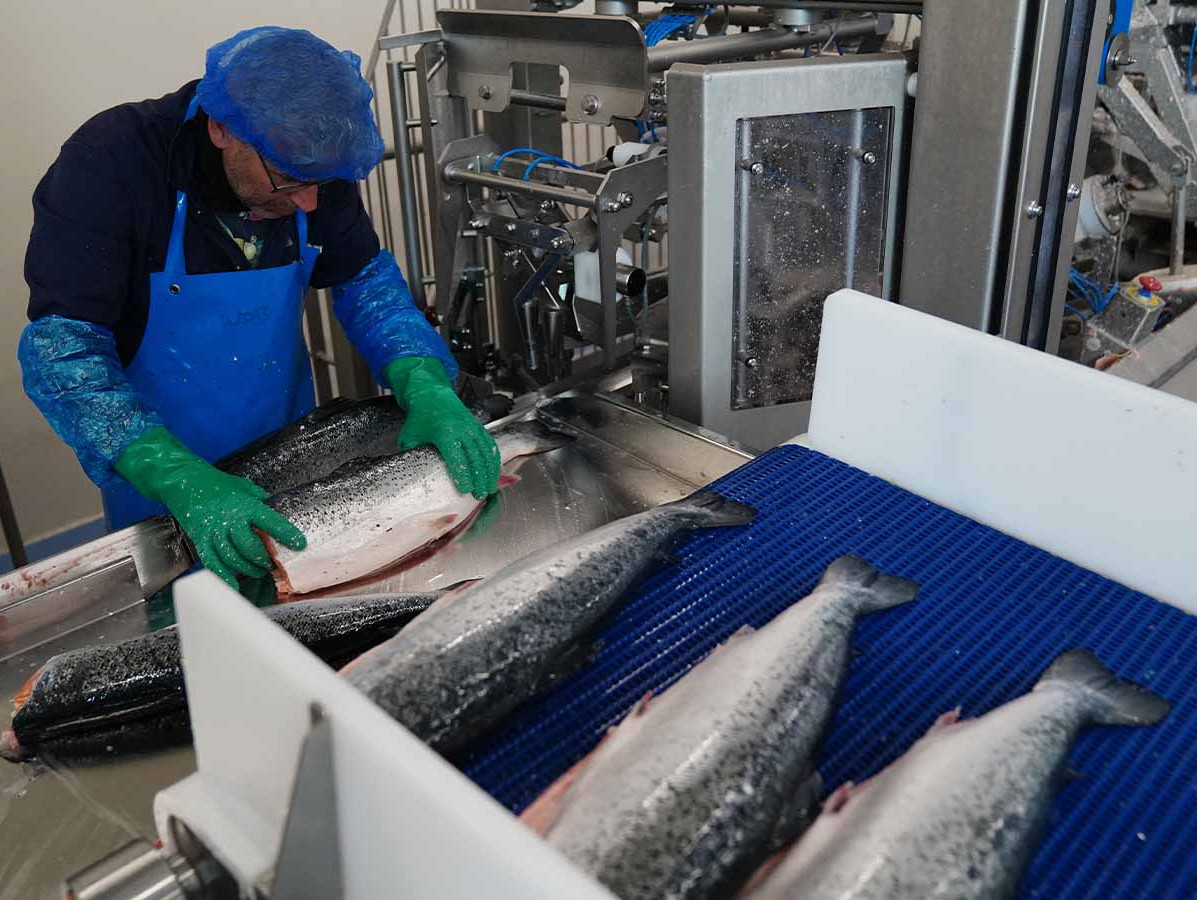
In a competitive market, it's hard to stand out. Yet Visscher Seafood continues to grow. This success can be attributed to the quality and service they provide. Efficient production lines further enhance their market position.
Visscher Seafood was established in 1986. In the early years, the company focused on fish from the North Sea, including sole and cod. Around the turn of the century, they shifted to Norwegian salmon. There were significant investments in new processing lines suitable for salmon filleting. But soon, it became clear that the investment was insufficient. Visscher Seafood needed more space. They purchased buildings, and by 2015, the new extension was complete. The most recent expansion was in 2023, and improvements are ongoing—not just in the office, but in the factory too.
The company exports to countries like the United States. "We had an employee in the US for two years," says Pieter Korf, Head of Production and Technical Services. "This helped us establish a foothold there. We also do business in Asia. It's an emerging market for us, though it's challenging to gain a strong position." Visscher Seafood mainly deals in salmon but also has whitefish. "This diversifies our appeal to customers."

Corwin van den Bor (left) with Pieter Korf
The competition is fierce, but Pieter prefers to see competitors as colleagues and competitors at the same time: "There's enough cake for everyone; we just shouldn't all focus on the same slice." Differentiation is crucial in such a market. "Quality and service are paramount. That's why we offer both salmon and whitefish. Efficiency is also key. Salmon is a relatively expensive fish. To get a higher return, production capacity must increase. However, manpower is scarce. If you increase production, you need more hands. That's why we invest in machinery; it pays off in the long run."
The company is critical of its internal transport processes. They have achieved efficiencies by automating certain areas. "We've placed several links between our packaging and filleting machines via Jansen Techniek," says Pieter. A prime example is the conveyor belt between the main machine and the filleting machine. Previously, fish were dumped onto the conveyer belt form the main machine, workers had to lift and position the fish correctly on the conveyor belt—strenuous work. Now, thanks to the new system, this task is much lighter. The fish no longer have to be lifted but slid into place. This means workers can sustain their tasks for longer. Moreover, it's gentler on the fish. Salmon is delicate; a bruise or bend, and it's unsellable. By aligning processes, there's far less wastage.

Another ingenious solution is the conveyor belt for the tempex boxes stored in the attic. Previously, the tempex boxes had to be handled frequently. They were delivered on a pallet, had to be brought up by the elevator and then wheeled into place. To use them, they had to be brought back down to the production area by pallet. The whole process was significantly simplified with a new transport line lifting the boxes. "Creating this transport line posed challenges," says Corwin van den Bor of Jansen Techniek. "It had to go through the roof, ceiling, and wall. Plus, when not in use, it shouldn't be in the way." The solution? A foldable conveyor belt. Brilliant, yet complex. "Drivers who work for other companies always praise our system," says Pieter. "Unloading is faster and simpler, and fewer workers are needed."
Pieter has more plans in the pipeline. There's talk of a larger transport line. "It's about a 50-meter line," says Corwin. "This will transport tempex packaging from the attic directly to the filleting belt in the production area." The plans are being drafted, but Pieter is confident. "Jansen Techniek does great work. They deliver on promises, and if there's an issue, they address it promptly. We appreciate their honesty. It's a long-term partnership; personal contact is key. I trust Corwin; he always looks for the best solution—the one that best suits our company"
www.visscherseafood.com
www.jansentechniek.nl
Photos: Naomi Heidinga
Source: Vakblad Voedingsindustrie 2023